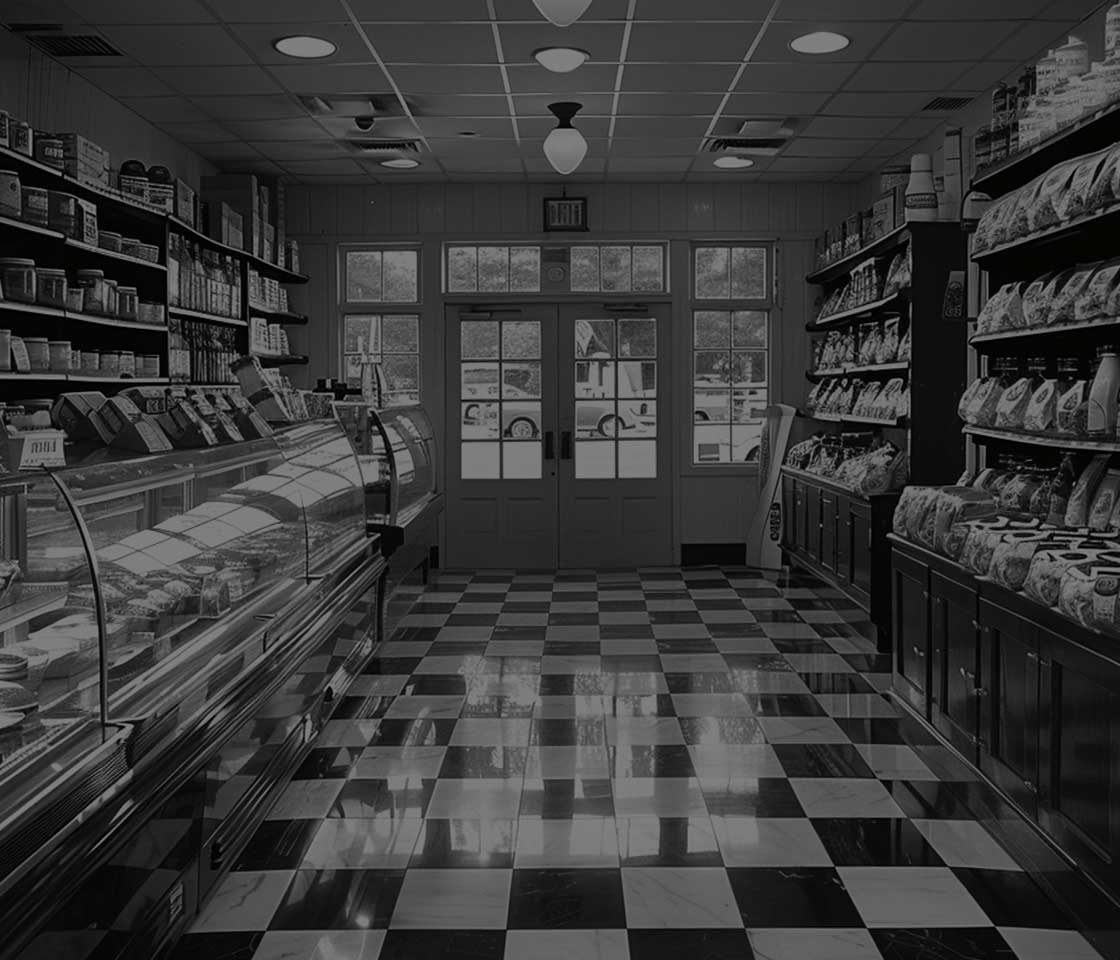A Look at the Early Days of Supermarkets and Their Impact on Consumer Behaviour and Retail Strategies.
Whether you buy your groceries online and have them delivered or shop in person at your local grocery store, there’s a clear level of convenience we all take for granted. From the vast selection of brands for each product to the multitude of departments available throughout the store, supermarkets have truly become a one-stop shop.

“THE PAST IS A FOREIGN COUNTRY: THEY DO THINGS DIFFERENTLY THERE.”
From L.P. Hartley’s The Go-between
But it hasn’t always been this way. In fact, the “supermarket” concept is not even 100 years old. During the 19th and early 20th century, grocers carried a limited number of items which the clerk picked for the customer from behind a counter. Meat and bread were bought separately at the butchers and bakers.
The transition from shopping at specialist stores like greengrocers, butchers, and bakeries to buying everything in a single grocery store primarily took place from the late 1920s through the 1930s, culminating in the widespread adoption and expansion of supermarkets by the 1950s and 1960s.

The Birth of the Supermarket
The concept of the supermarket, a store where customers could buy a wide variety of food products under one roof, was pioneered by Michael Cullen when he opened the first King Kullen store in a warehouse on the outskirts of New York City in 1930.
Widely recognized as America’s first true supermarket, despite some other claims to the title, King Kullen’s innovation was in offering a vast selection of products, including perishables like meat and dairy, at significantly lower prices by emphasizing volume and operating with minimal decor or frills. This model quickly caught the attention of consumers and other retailers and culminated in the widespread adoption and expansion of supermarkets by the 1950s and 1960s.
Several key innovations and societal shifts drove this transformation.

Economic prosperity: The post-World War II economic boom led to increased disposable incomes for many families. This economic prosperity enabled consumers to afford more goods, including groceries from supermarkets.

Automobile ownership: Increased car ownership in the 1950s allowed consumers to travel more easily to larger stores like supermarkets, where they could purchase groceries in bulk and transport them home conveniently.
Invention of shelving: The addition of shelves revolutionized grocery stores in the early 1950s. Instead of stacking merchandise in piles on the floor, grocers could arrange products neatly in rows, categorized by type and brand. This not only enhanced visibility and accessibility for customers but also allowed for more accurate inventory management.

Refrigeration technology: Advances in refrigeration technology meant supermarkets could offer a wider range of perishable goods, such as fresh produce, dairy products, and meats.

Suburbanization: The 1950s witnessed a significant shift towards suburban living, with more families moving away from urban centers. Supermarkets strategically located in suburban areas capitalized on this trend by catering to the needs of the growing suburban population.
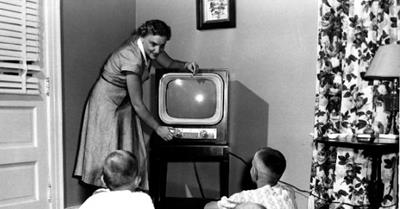
Advertising and marketing: Supermarkets heavily advertise their products through various channels, including television, radio, and print media. These marketing efforts, designed to increase consumer awareness and create a sense of urgency, were key in driving foot traffic to the stores.
So What Were Grocery Stores Like In The 50s?
Let’s step back in time for a moment and examine some of the things you’d notice as you walked through a 1950s grocery store.
Grocers used to only sell food: It wasn’t until the 1980s that people started to expect a wide variety of items at their grocery store — from flowers and toys to magazines and greeting cards. Before then, shoppers were only purchasing food.
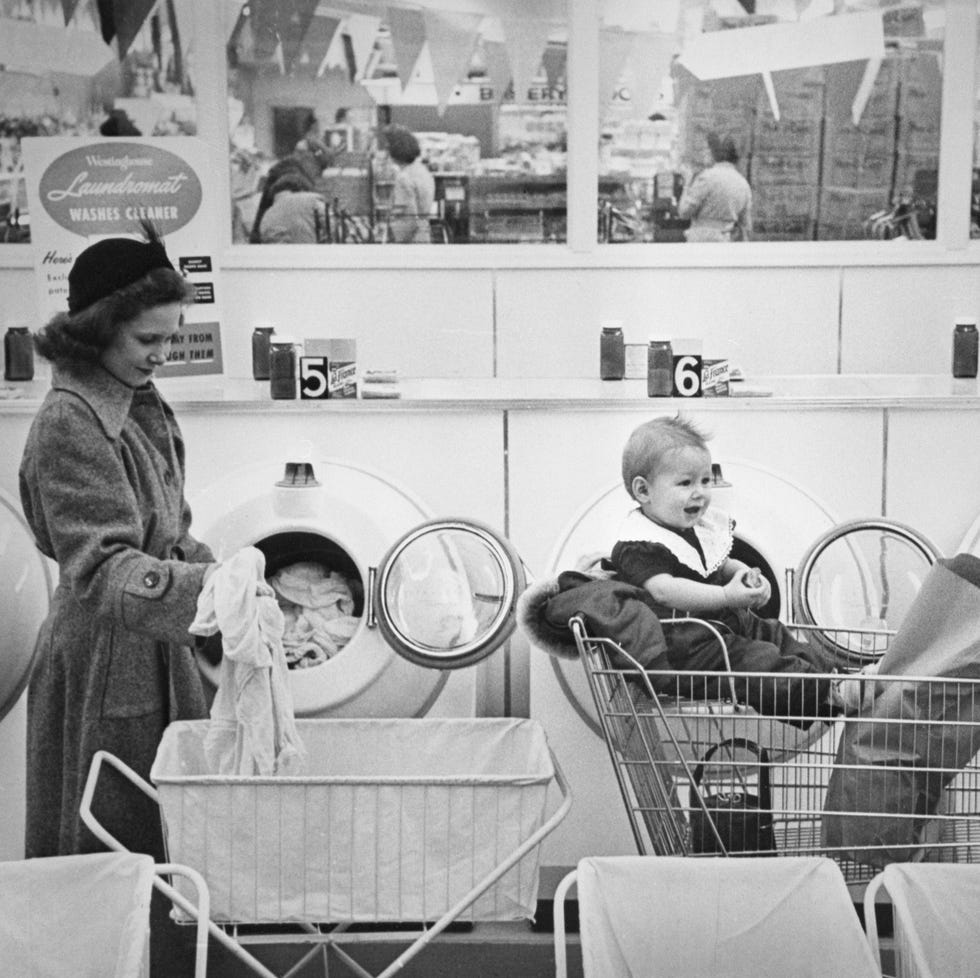
Some supermarkets were combined with other services: Like a laundromat or a lunch counter. Specifically tailored to busy moms, the combined services were ideal for women who wanted to get two household chores done during the same outing.

Frozen foods were all the rage: Although the method for freezing foods was invented in 1924, it didn’t become popular until the 1950s. By 1954, the demand for products like frozen TV dinners was so high that more products started filling up the freezer aisle.
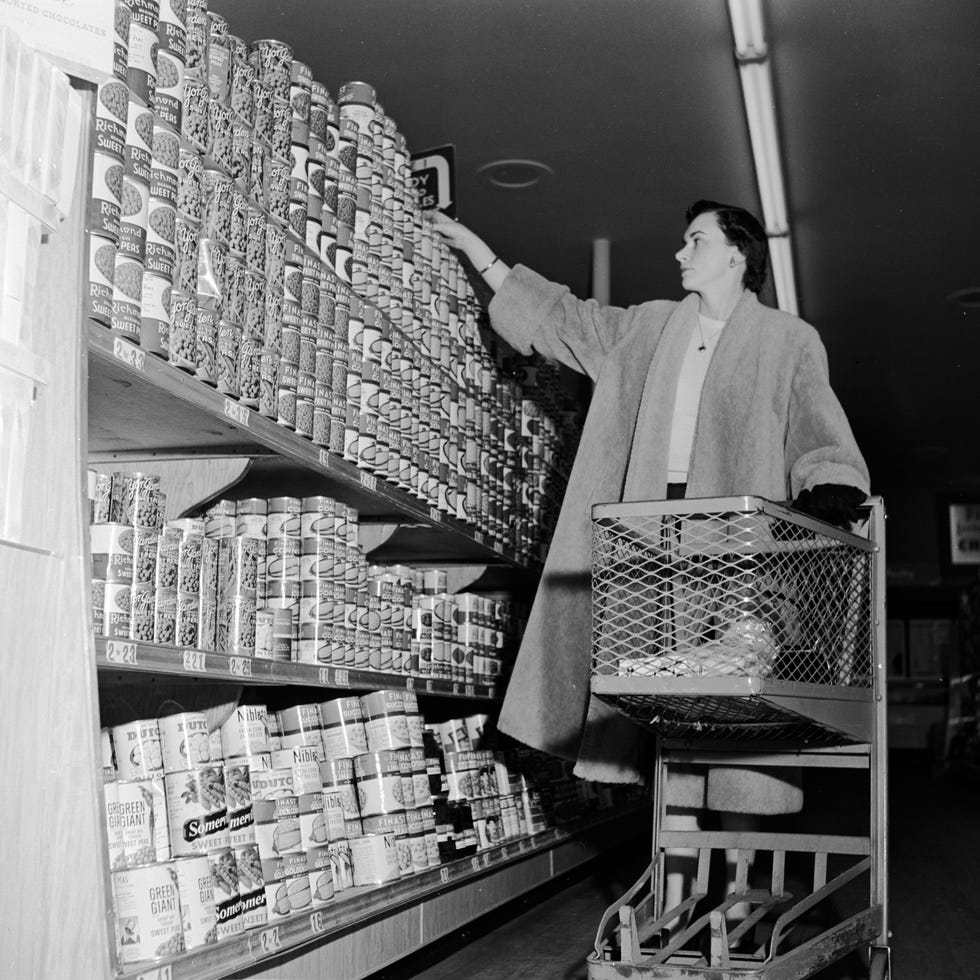
Self-service shopping was a new concept: The old grocery system involved customers calling or bringing their grocers lists of what they needed, then stores would bag items for pick-up or delivery. But Clarence Saunders changed the game when he opened the first self-service grocery store, the Piggly Wiggly, in 1916 in Memphis, Tennessee. By the 1950s and 1960s, shoppers became accustomed to strolling through aisles and hand-selecting items themselves.
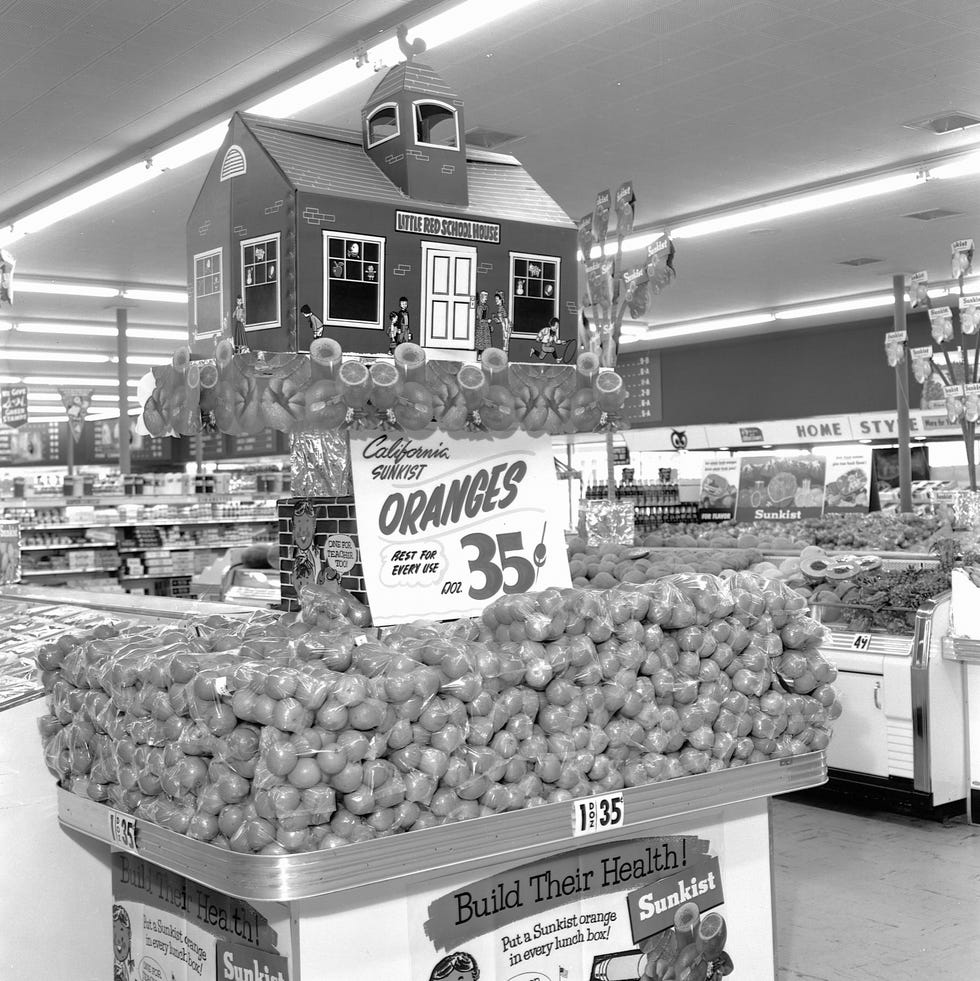
Stores were smaller but store and window displays were elaborate: While today’s supermarkets can average 45,000 square feet, grocery stores in the 1950s were between 2,000 to 10,000 square feet, depending on their location. The stores compensated with elaborate displays, big wording and bright colours to grab the attention of shoppers.
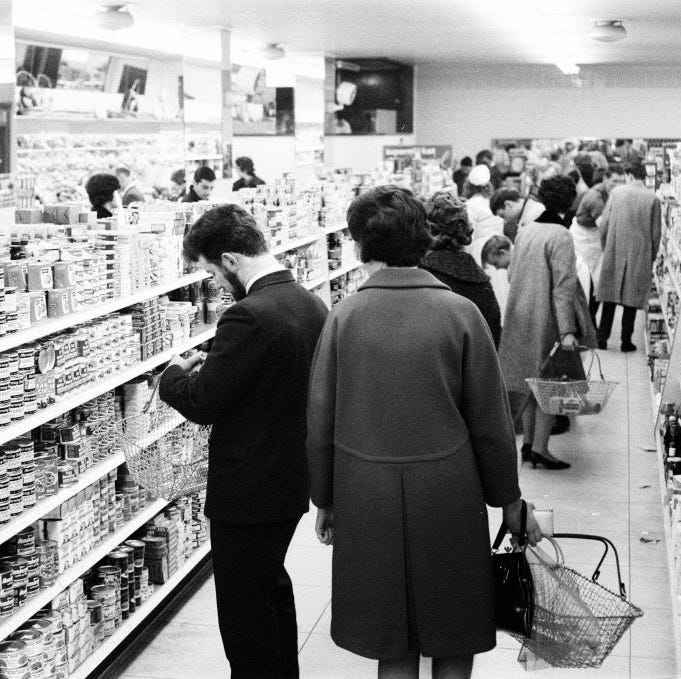
Fewer items were kept in stock: Smaller stores meant less room for choice. Although this may have made shopping faster with fewer choices, it didn’t provide consumers with the variety they have today.
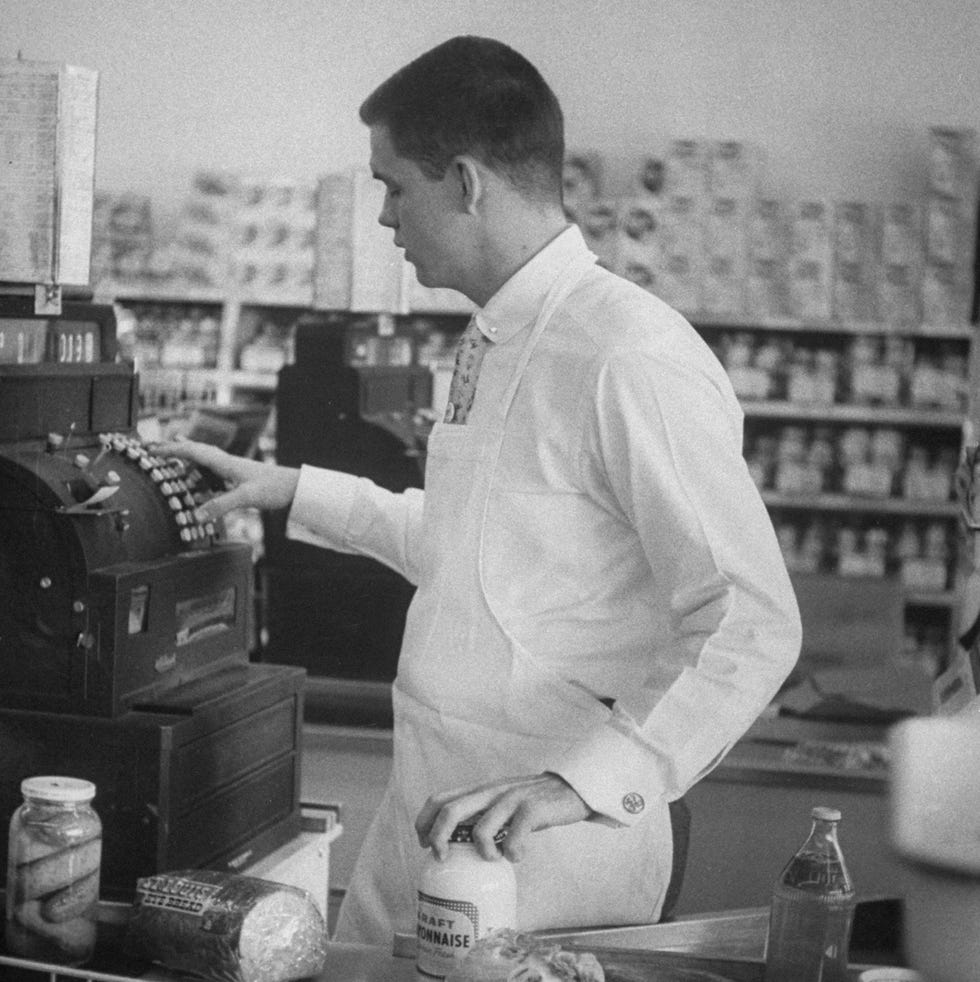
All items were price-checked and it took a lot longer to check out: Since the barcode wasn’t invented until 1974, store clerks had to manually place a price tag sticker on each product. To speed up the check-out process, stores began installing conveyor belts in the 1950s and they are still used in stores to this day.
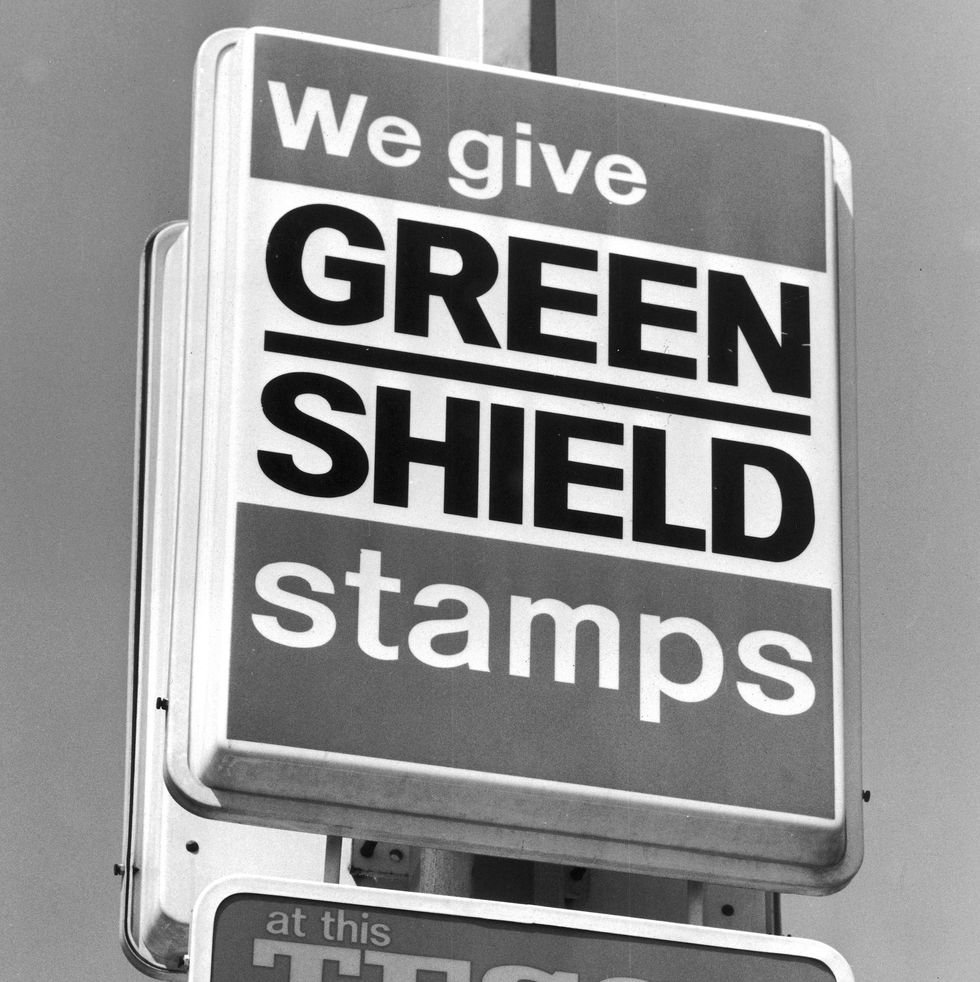
Green stamps were huge in the U.S: Ever wonder where coupons and loyalty programs got their start? The Green Stamps loyalty program, established by Sperry and Hutchinson in 1896, allowed shoppers to collect stamps at their local grocery store and trade them in for items in the S&H catalogue.

Locally sourced produce was a thing of the past: It’s hard to believe now but when nationwide supermarkets moved in, locally sourced produce wasn’t an affordable option. It was all about what food stores could supply at the lowest cost and that didn’t include produce from the farm down the road. Supermarkets didn’t see a push from consumers to buy locally again until the 21st century.

Pre-wrapped meat and canned food were big draws: When plastic film was invented in the mid-1950s, pre-packaged meat started to be sold in cellophane wrapping. It didn’t take long for paper-wrapped cuts from the butcher to be a thing of the past. Canned foods became popular as people stocked up on non-perishable foods during the Cold War era in case of a bombing. Canned food choices stretched far beyond just beans and soup and included everything from asparagus to pineapple.
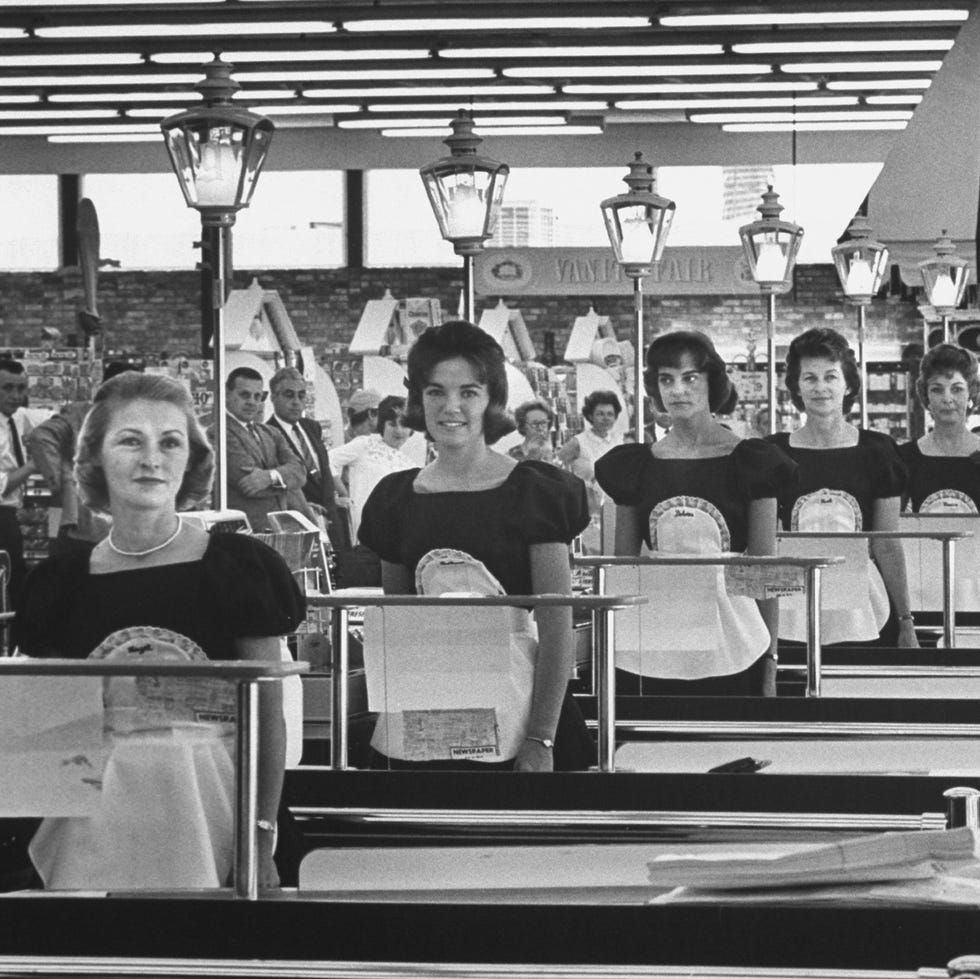
The staff wore uniforms: The Piggly Wiggly was the first grocery store chain to introduce uniforms, outside of the typical apron. The 1960s outfit worn by Piggly Wiggly female employees featured a black dress and a white frilly apron.
How 1950s Supermarkets Still Shape Modern Shopping
The innovations and societal shifts of the 1950s continue to shape the landscape of grocery retail in 2024. The concept of convenience for instance, which drove consumers to embrace one-stop shopping in the 1950s, remains just as important in today’s supermarket experience.
One of the most significant in-store advancements has been the arrival of self-checkout systems in the late 20th century. These hotly debated kiosks, which allow customers to skip the longer checkout lines and scan and pay for their items, add another layer of convenience to busy grocery retailers looking for ways to keep consumers happy while remaining competitive.
The journey from the 1950s to 2024 is a testament to the power of innovation in shaping the way we shop for groceries. With each technological advancement, the boundaries of convenience are pushed further, ensuring that the future of grocery shopping remains dynamic, accessible, and tailored to the evolving needs of consumers.
Are you ready for a store reset or remodel?
As one of Canada’s largest retail fixture and store design builders, we design grocery environments, displays, and fixtures with your business and the entire shopping experience in mind. Looking for help with your next project? Contact our retail design-build team to get a project plan and quote now!

